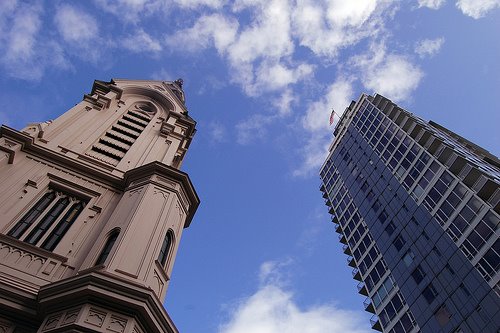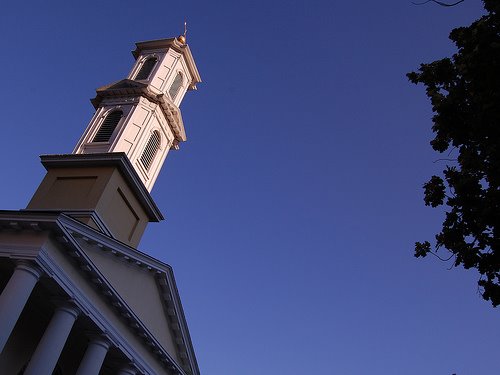It was a book that I can rightly claim as mine for the first time. I wished for it in the Christmas of 1993. Manong Edmund who picked me in the bunutan was really at lose how to get it until Dondon was able to find one at a National Bookstore store in Manila. Ambeth Ocampo has since moved on as a monk, National Historical Institute (NHI) boss, and National Commission for Culture and Arts top honcho. The book has since been lost somewhere among the countless people who borrowed it, Manong Edmund has grown his hair long and now speaks with unseen spirits, and Dondon is in an eternal euphoria in some fantasy island off Northern Mindanao.
Looking back, THAT book sparked a chain reaction of compulsive book buying: Aguinaldo’s Breakfast, Luna’s Moustache, Bonifacio’s Bolo, Rizal Without the Overcoat, The Bones of Contention; then to F. Sionil Jose’s Rosales Saga (Po-on, Tree, My Brother My Executioner, The Pretenders, Mass), Ermita, Gagamba, Viajero, Sin, Ben Singkol, Vibora; Nick Joaquin’s Culture and History, Manila My Manila, A Question of Heroes; Orlino Ochosa’s The Tinio Brigade, Viva Isabelo Abaya, Bandoleros, Pio Del Pilar and Other Heroes; William Henry Scott’s Pre-Hispanic Source Materials for the Study of Philippine History, Looking for the Pre-Hispanic Filipino, Ilocano Responses to American Aggression 1900-1901; volumes 1 to 19 of Pol Medina Jr.’s Pugad Baboy Series; Bob Ong’s ABNKKBSNPLAKo?!, Bakit Baliktad Magbasa ng Libro ang mga Pilipino?, Paboritong Libro ni Hudas, Alamat ng Gubat, Stainless Longganisa; and finally the great books: Pedro Galende’s (OSA) “Angels in Stones”, Pedro Salgado’s (OP) “Cagayan Valley and Eastern Cordillera 1581-1898”, Florentino Hornedo’s “On the Trail of Dominican Engineers, Artists and Saints in the Cagayan Valley and Batanes”, Emmanuel Luis Romanillo’s “The Augustinian Recollects in the Philippines”, Norma Alarcon’s “Philippine Architecture During the Pre-Spanish and Spanish Periods”, and that masterpiece of a Regalado Trota Jose --- “Simbahan: Church Art in Colonial Philippines 1565-1898”. In between are other books ranging from J.K. Rowling’s Harry Potter series to the NHI Historical Markers, Gabriel Garcia Marquez to that classic Magdalo cookbook “Pulutan: From the Soldier’s Kitchen”, and other bits and odds of travel guides, maps, biographies, fiction, and serious stuff (read: work related). But it was THAT book that started it all.
Looking back, it was THAT book that made Oyet P easier, he who opened the doors to poetry and that wonderful musicale “Lahar!”, Mt. Pulag and a documentary called “Dara Ken Lasag”, a magical place known as Almaguer and my eternal visita iglesia, and the blog now known as “Shooting Churches, Eating Noodles” that spawned a flickr account, a Friendster account, and lately a Facebook account.
Looking back, it was THAT book and Oyet P in my mind when I blogged a wish list in December of 2006. I do now have a flickr pro account since 2007 courtesy of unseen but heart-felt friends who I presume enjoys my photography. I was, however, able to journey to only one of the ten remaining national heritage colonial church sites that I have yet to visit. Rene Javellana’s (SJ) “Great Churches of the Philippines” remains out of print while that book about my visita iglesia is still a figment of my imagination although somebody did volunteered to be my agent. I did not win the lotto jackpot but I did have plenty of P30s, P40s and P80s; some P600s and P800s; and a near miss that came with a P20,000 consolation prize. I was accepted for a short course at the Maastrich School of Management but the Dutch Embassy in the Philippines denied my application for a fellowship, although I did travel to Benin, Malaysia, the USA, and back to Thailand. PRRM is not yet in the groove after 2 years (can you believe that!) and I guess I have to settle for those FHM Philippines B models in lieu of Renee Zellweger. GMA is still the president but Mike Defensor did lost in his run for senator (Take that you asshole!).
Happy Holidays!!!

PHOTO EXPLAINED: Iba was established as an ecclessiastical mission of the Augustinian Recollects in 1611. Its church was first built of coral blocks and limestones in the 1700s and has been renovated several times since then.
Looking back, THAT book sparked a chain reaction of compulsive book buying: Aguinaldo’s Breakfast, Luna’s Moustache, Bonifacio’s Bolo, Rizal Without the Overcoat, The Bones of Contention; then to F. Sionil Jose’s Rosales Saga (Po-on, Tree, My Brother My Executioner, The Pretenders, Mass), Ermita, Gagamba, Viajero, Sin, Ben Singkol, Vibora; Nick Joaquin’s Culture and History, Manila My Manila, A Question of Heroes; Orlino Ochosa’s The Tinio Brigade, Viva Isabelo Abaya, Bandoleros, Pio Del Pilar and Other Heroes; William Henry Scott’s Pre-Hispanic Source Materials for the Study of Philippine History, Looking for the Pre-Hispanic Filipino, Ilocano Responses to American Aggression 1900-1901; volumes 1 to 19 of Pol Medina Jr.’s Pugad Baboy Series; Bob Ong’s ABNKKBSNPLAKo?!, Bakit Baliktad Magbasa ng Libro ang mga Pilipino?, Paboritong Libro ni Hudas, Alamat ng Gubat, Stainless Longganisa; and finally the great books: Pedro Galende’s (OSA) “Angels in Stones”, Pedro Salgado’s (OP) “Cagayan Valley and Eastern Cordillera 1581-1898”, Florentino Hornedo’s “On the Trail of Dominican Engineers, Artists and Saints in the Cagayan Valley and Batanes”, Emmanuel Luis Romanillo’s “The Augustinian Recollects in the Philippines”, Norma Alarcon’s “Philippine Architecture During the Pre-Spanish and Spanish Periods”, and that masterpiece of a Regalado Trota Jose --- “Simbahan: Church Art in Colonial Philippines 1565-1898”. In between are other books ranging from J.K. Rowling’s Harry Potter series to the NHI Historical Markers, Gabriel Garcia Marquez to that classic Magdalo cookbook “Pulutan: From the Soldier’s Kitchen”, and other bits and odds of travel guides, maps, biographies, fiction, and serious stuff (read: work related). But it was THAT book that started it all.
Looking back, it was THAT book that made Oyet P easier, he who opened the doors to poetry and that wonderful musicale “Lahar!”, Mt. Pulag and a documentary called “Dara Ken Lasag”, a magical place known as Almaguer and my eternal visita iglesia, and the blog now known as “Shooting Churches, Eating Noodles” that spawned a flickr account, a Friendster account, and lately a Facebook account.
Looking back, it was THAT book and Oyet P in my mind when I blogged a wish list in December of 2006. I do now have a flickr pro account since 2007 courtesy of unseen but heart-felt friends who I presume enjoys my photography. I was, however, able to journey to only one of the ten remaining national heritage colonial church sites that I have yet to visit. Rene Javellana’s (SJ) “Great Churches of the Philippines” remains out of print while that book about my visita iglesia is still a figment of my imagination although somebody did volunteered to be my agent. I did not win the lotto jackpot but I did have plenty of P30s, P40s and P80s; some P600s and P800s; and a near miss that came with a P20,000 consolation prize. I was accepted for a short course at the Maastrich School of Management but the Dutch Embassy in the Philippines denied my application for a fellowship, although I did travel to Benin, Malaysia, the USA, and back to Thailand. PRRM is not yet in the groove after 2 years (can you believe that!) and I guess I have to settle for those FHM Philippines B models in lieu of Renee Zellweger. GMA is still the president but Mike Defensor did lost in his run for senator (Take that you asshole!).
Happy Holidays!!!

PHOTO EXPLAINED: Iba was established as an ecclessiastical mission of the Augustinian Recollects in 1611. Its church was first built of coral blocks and limestones in the 1700s and has been renovated several times since then.








+in+Bangkok.JPG)








































